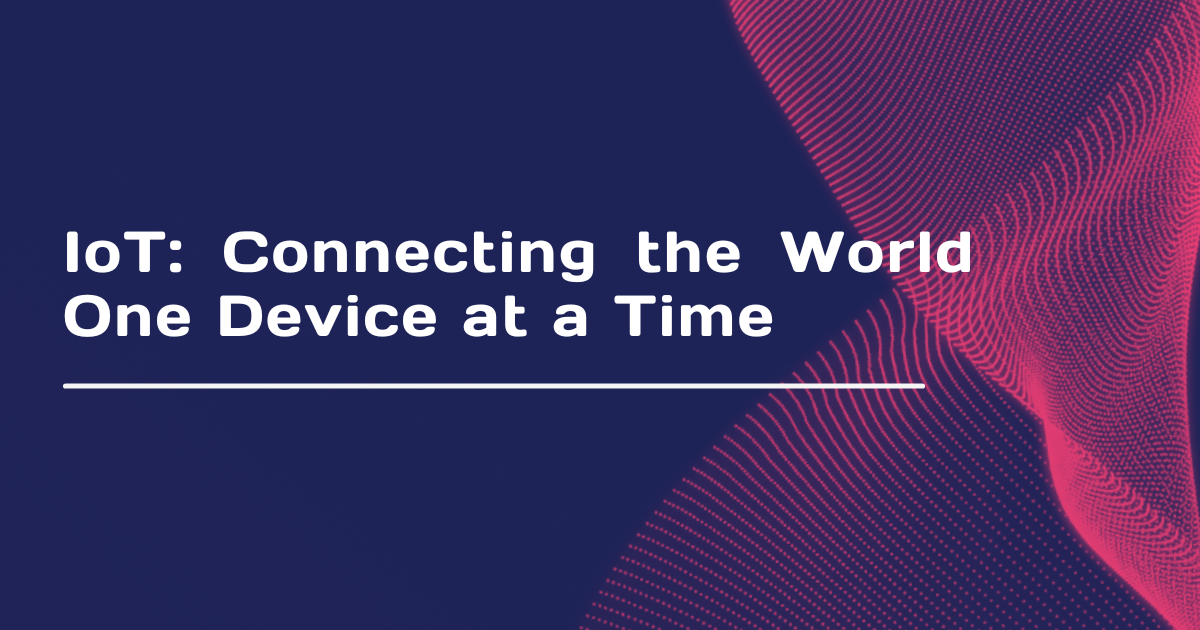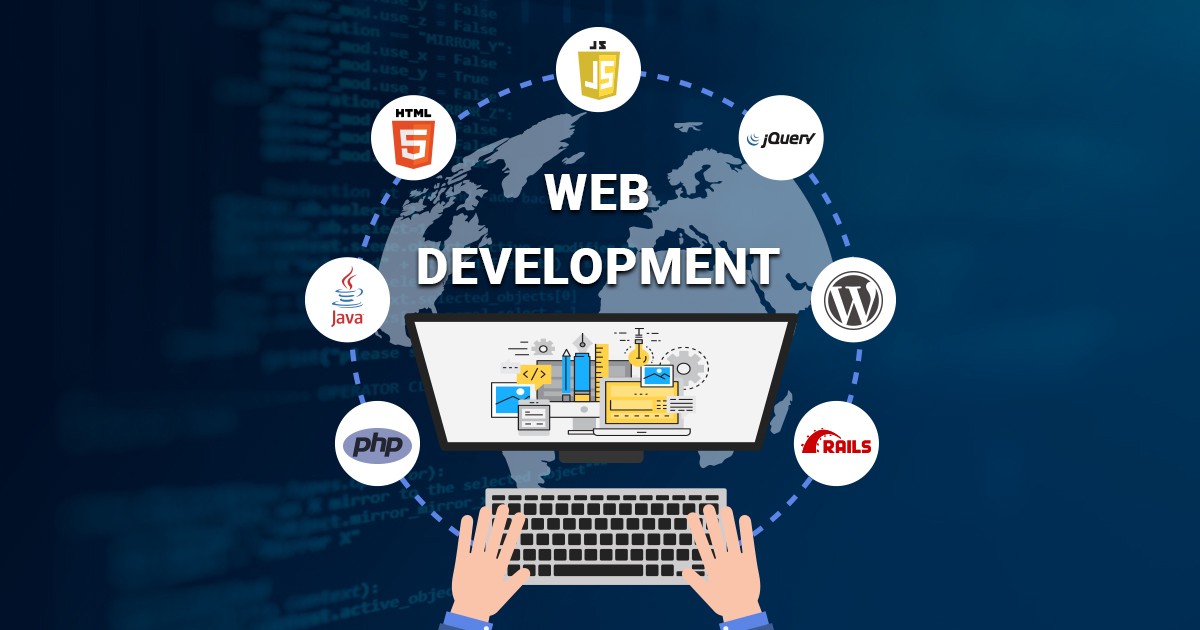In an increasingly interconnected world, the Internet of Things (IoT) has emerged as a transformative force, connecting devices, systems, and people like never before. This article explores the vast landscape of IoT, diving into its subcategories: Retail IoT, Industrial IoT, and Smart IoT. We’ll unravel the potential, challenges, and real-world applications that define this technological marvel.
Introduction to IoT
The Internet of Things, or IoT, is a concept that encompasses a vast network of interconnected devices and objects. These devices, equipped with sensors and software, gather and exchange data over the Internet. IoT is the glue that binds our physical world to the digital realm, creating a web of information that revolutionizes industries and enhances our daily lives.
The Backbone of IoT: Connectivity
At the heart of IoT lies connectivity. Devices communicate through various channels, such as Wi-Fi, cellular networks, Bluetooth, and, more recently, low-power wide-area networks (LPWAN). These connectivity options enable devices to transmit data seamlessly, facilitating the exchange of information critical for IoT’s functionality.
Unlocking the Power of IoT: Benefits and Features
The Internet of Things (IoT) is no longer a futuristic concept; it’s a reality revolutionizing industries and transforming how we live and work. IoT encompasses a network of interconnected devices, sensors, and systems that communicate and share data over the Internet. In this article, we’ll explore IoT’s remarkable benefits and key features driving its adoption across various sectors.
Benefits of IoT
Enhanced Efficiency and Productivity IoT empowers organizations to optimize processes and streamline operations. By connecting devices and systems, businesses can automate routine tasks, reduce manual intervention, and allocate resources more efficiently. This leads to increased productivity and cost savings.
Real-Time Data Insights
One of the standout advantages of IoT is the ability to gather real-time data from sensors and devices. This data provides valuable insights into various processes, enabling businesses to make informed decisions promptly. From monitoring equipment performance to tracking inventory levels, IoT data drives intelligent actions.
Improved Decision-Making
IoT’s data-rich environment enables data-driven decision-making. Businesses can analyze trends, patterns, and anomalies to anticipate customer needs, optimize supply chains, and develop targeted marketing strategies. This leads to more informed and effective decisions.
Cost Reduction
Efficiency gains, predictive maintenance, and reduced energy consumption are just a few ways IoT can lower operational costs. For instance, predictive maintenance allows businesses to address equipment issues before they become costly failures, saving time and money.
Enhanced Customer Experiences
IoT enhances customer experiences by personalizing interactions. Retailers can recommend products based on past purchases, and smart homes adjust settings to match occupants’ preferences. These personalized experiences foster customer loyalty.
Safety and Security
IoT plays a crucial role in safety and security applications. Smart surveillance systems can detect unusual activities, and environmental sensors can monitor hazardous conditions. IoT technologies enhance both public safety and cybersecurity.
Sustainability
Sustainability is a growing concern, and IoT contributes by optimizing resource usage. In agriculture, precision farming minimizes water and fertilizer waste. Smart cities reduce energy consumption through efficient lighting and waste management.
Key Features of IoT
Connectivity
IoT relies on various connectivity technologies, including Wi-Fi, cellular networks, Bluetooth, and LPWAN. These technologies facilitate communication between devices and the cloud, enabling data exchange.
Sensors and Actuators
Sensors collect data from the physical world, measuring factors like temperature, humidity, motion, and more. Conversely, actuators take action based on the data received, such as adjusting thermostat settings or turning on lights.
Cloud Computing
The cloud serves as the backbone of IoT. It stores and processes the massive amounts of data generated by IoT devices. Cloud-based platforms allow for data analysis, storage, and remote device management.
Data Analytics and Machine Learning
IoT data is valuable when it’s transformed into actionable insights. Data analytics and machine learning extract meaningful patterns and predict future events based on historical data.
Security Measures
Security is a top priority in IoT. Encryption, authentication, and secure data transmission protocols are implemented to protect sensitive data and prevent unauthorized access.
Scalability
IoT systems must be scalable to accommodate new devices and sensors. Scalability ensures that IoT solutions can grow with the needs of the business.
User Interface (UI) and User Experience (UX)
Intuitive user interfaces and seamless user experiences are essential in IoT applications. Whether it’s a smartphone app to control smart devices or a web-based dashboard for industrial monitoring, UI/UX design plays a critical role.
Edge Computing
Edge computing involves processing data closer to the source (i.e., the device or sensor) rather than relying solely on centralized cloud servers. This reduces latency and is especially important for real-time applications.
IoT is reshaping industries and our daily lives, offering many benefits through its interconnected devices and systems. With its ability to drive efficiency, provide valuable insights, enhance decision-making, and improve customer experiences, IoT’s influence continues to expand across sectors, making it a transformative force in the digital age.
Retail IoT: Revolutionizing the Shopping Experience
Creating Personalized Shopping Journeys
Retail IoT is reshaping how we shop. IoT sensors track customer behavior, offering retailers personalized recommendations and discounts. This creates a tailored shopping experience that boosts customer loyalty.
Enhancing Inventory Management
IoT transforms inventory management by providing real-time data on stock levels and product conditions. This ensures products are always available and fresh, reducing losses and increasing efficiency.
IoT in Customer Engagement
Smart shelves and beacons enhance customer engagement. Customers receive location-based promotions and can access detailed product information, turning shopping into an interactive experience.
Industrial IoT: The Smart Factories of Tomorrow
IoT in Manufacturing Efficiency
Industrial IoT optimizes manufacturing processes by monitoring equipment performance, automating tasks, and predicting maintenance needs. This increases production efficiency and reduces downtime.
Predictive Maintenance
Machines equipped with IoT sensors can predict when maintenance is needed, preventing breakdowns and reducing maintenance costs.
Safety and Compliance
IoT enhances workplace safety by monitoring hazardous conditions and ensuring compliance with safety regulations.
Smart IoT: Transforming Our Daily Lives
IoT and Smart Homes
Although, IoT devices make our homes more convenient and secure. From thermostats that adjust based on our preferences to smart locks and security cameras, IoT enhances our daily lives.
IoT in Healthcare
In healthcare, IoT devices monitor patients’ vital signs and Transmit Data to Healthcare providers, enabling remote patient monitoring and faster response times.
IoT and Sustainable Living
IoT contributes to sustainability by optimizing resource usage in smart cities and agriculture, such as water and energy.
Challenges and Security in IoT
Despite its potential, IoT faces challenges. Privacy concerns, data security, and interoperability issues must be addressed to ensure safe and effective IoT deployment.
Real-World Applications of IoT
IoT’s real-world applications are diverse. Smart Cities use IoT for traffic management and waste reduction. Agriculture benefits from IoT for precision farming. Transportation relies on IoT for logistics and vehicle monitoring.
The Future of IoT: A Glimpse into Tomorrow’s Connected World
The Internet of Things (IoT) has already profoundly impacted industries, businesses, and our daily lives. Yet, the true potential of IoT is just beginning to emerge. As we look ahead, the future of IoT promises to be even more transformative, with innovations that will reshape how we live, work, and interact with technology.
5G Connectivity: The Speed of Innovation
The rollout of 5G networks will be a game-changer for IoT. With ultra-fast and low-latency connectivity, 5G will enable real-time communication between devices, making IoT applications more responsive and efficient. This will open up new possibilities in autonomous vehicles, augmented reality, and remote surgery.
Edge Computing:
Processing Power at the edge computing, where data is processed closer to the source (i.e., the device or sensor), will become more prevalent. This approach reduces latency and bandwidth usage, which is critical for applications like autonomous vehicles and smart cities. Machines will have increased processing power, allowing for faster decision-making at the edge.
AI and Machine Learning: Smart IoT Devices
Integrating Artificial Intelligence (AI) and machine learning (ML) into IoT devices will make them smarter and more autonomous. IoT devices will analyze data locally, learn from user behavior, and adapt to changing conditions. This will lead to more personalized experiences and greater energy efficiency.
IoT in Healthcare: Revolutionizing Patient Care
In healthcare, IoT will continue to evolve. Wearable devices monitor vital signs, while smart pills provide medication adherence data. Telemedicine will become more advanced, making healthcare accessible to remote and underserved areas. IoT will enable early disease detection and personalized treatment plans.
Sustainable IoT: A Greener World
Sustainability will be a key focus in the future of IoT. Smart cities will optimize energy usage, reduce waste, and lower emissions. Agriculture will benefit from precision farming, conserving resources, and increasing yields. IoT will play a vital role in achieving environmental goals and combating climate change.
Security and Privacy: Protecting the Connected World
As IoT devices increase, so do security concerns. Future IoT solutions will prioritize robust security measures, including end-to-end encryption and authentication. User privacy will be paramount, with greater transparency and control over data collection and usage.
IoT in Industry: Smart Factories and Supply Chains
The industrial sector will witness a revolution through Industrial IoT (IIoT). Smart factories will be highly automated and responsive to demand fluctuations. Supply chains will be more efficient and transparent, reducing waste and optimizing logistics.
Smart Homes and Cities: A Seamless Experience
In smart homes, IoT will provide seamless automation and connectivity. Homes will adapt to occupants’ preferences, optimizing energy usage and security. Smart cities will offer efficient public services, traffic management, and waste reduction, enhancing the quality of urban life.
Quantum Computing: Unlocking New Possibilities
Quantum computing has the potential to revolutionize IoT by solving complex problems and improving encryption. While it’s still in its infancy, quantum computing could open up new avenues for IoT applications in cryptography and material science.
IoT Standards and Interoperability: A Unified Ecosystem
To realize IoT’s full potential, there will be a push for standardized protocols and interoperability. This will enable devices from different manufacturers to work seamlessly, fostering a more unified and user-friendly IoT ecosystem.
The future of IoT is a landscape of boundless innovation and possibilities. With advancements in connectivity, computing power, and artificial intelligence, IoT will continue transforming industries, enhancing our daily lives, and tackling some of the world’s most pressing challenges. As we move forward, the only certainty is that the Internet of Things will play an ever-expanding role in our connected world.
Conclusion
IoT is revolutionizing industries and transforming the way we live. Its subcategories, Retail IoT, Industrial IoT, and Smart IoT, drive innovation and create a more interconnected world. While challenges exist, the potential for IoT to enhance our lives is boundless.





